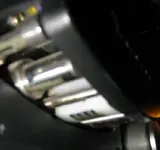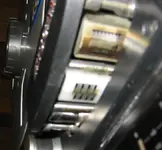D
doris
Member
Hi. This is really embarrassing, but I accidentally used a demagnetizer on my Tascam TSR-8 tape heads with the power on. Now the thing won't record on tracks 1-5. In record mode and during recording I get good strong levels on 2-5 (almost nothing on 1) on the meters, but during playback the levels are very weak (not even enough to show up on the tascam's meters. Also, there is quite a bit of cross talk between tracks now, enough to show up on the meters of the adjacent tracks.
What specifically have I done here? Can someone give me a best case/ worst case scenario? Is this something that is fixable? Or should I accept a learned lesson and start saving up for another?
thanks in advance for any help, and please feel free to berrate, lecture, ridicule, etc.
--bh
What specifically have I done here? Can someone give me a best case/ worst case scenario? Is this something that is fixable? Or should I accept a learned lesson and start saving up for another?
thanks in advance for any help, and please feel free to berrate, lecture, ridicule, etc.
--bh






 and you might be able to bring the heads back to some form of normalcy but the electronics may have been irreparably damaged as well and is why I suggested earlier in a previous post to invest and hour of shop time by a qualified technician to really see where you stand with this.
and you might be able to bring the heads back to some form of normalcy but the electronics may have been irreparably damaged as well and is why I suggested earlier in a previous post to invest and hour of shop time by a qualified technician to really see where you stand with this.